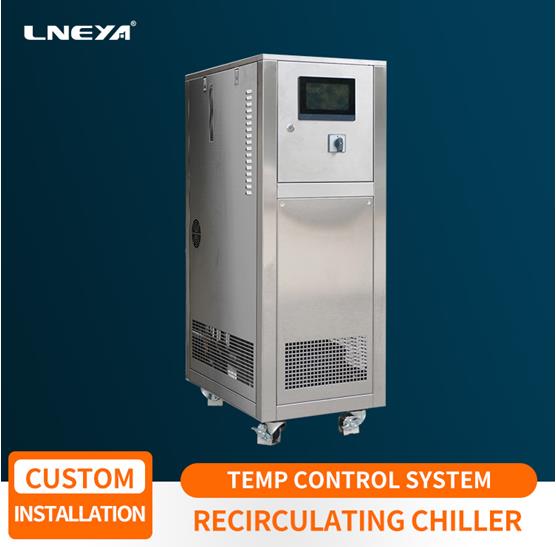A que devo prestar atenção ao adicionar refrigerante a um chiller arrefecido a água?
In our life, we believe that everyone is
very familiar with refrigeration. In the central air conditioning and
industrial production process cooling industry, small water-cooled chillers is
more common. This unit is composed of a compressor in the fuselage, a
horizontal shell and tube condenser, an evaporator, a thermal expansion valve,
and some related parts. Under the cooperation of these auxiliary parts, the
overall small water cooled chiller is compact in structure, convenient in
operation and control, and is popular among the public in the market.

For refrigeration systems that do not have
a high pressure reservoir and a low pressure vapor-liquid separator, the
control of refrigerant charge is particularly important. Because the
refrigeration system is a condenser and also acts as a high-pressure reservoir,
the refrigerant is stored in the condenser, and the condenser is cooled. The
heat dissipation area is reduced and the condensing pressure is increased,
resulting in a decrease in cooling capacity.
For the control of the refrigerant charge
of such small water-cooled chillers, the following methods are followed during
the filling process:
First, touch the temperature of the
condenser casing.
The upper outlet of the condenser outlet is
heated above the outlet, and the outlet below the outlet is cool. (There is a
description of the high temperature exhaust of the compressor in the inside.
The cooling indicates that the small water-cooled chillers is a liquid space.)
Second, look at the inspiratory pressure.
Corresponding to the temperature of the
refrigerant water in the evaporator. (That is, corresponding to the evaporation
temperature.)
Third, look at the compressor return pipe
temperature.
The high-temperature unit return pipe
should be cooled and dew, but it can be dew condensation to the compressor
return valve; the low-temperature unit return pipe should be frosted, but the
frost can be connected to the compressor return valve. If condensation or frost
builds up on the compressor casing, liquid refrigerant will enter the
crankcase, causing the compressor to run back and cause liquid
problem.
The above is a partial analysis of our
LNEYA technicians for water-cooled chillers. Regarding the specific use of our
water-cooled chillers, you can contact us sales@lneya.com for more detailed
instructions.
Recomendações relacionadas
-
O que sabe sobre os chillers criogénicos centrífugos antes de os utilizar?
1138Existem algumas diferenças na utilização de refrigeradores criogénicos entre diferentes compressores, mas não muitas. Devido aos diferentes estilos dos diferentes compressores, os pontos a ter em atenção durante o funcionamento também são diferentes. Por exemplo...
Ver pormenores -
As principais áreas de aplicação dos chillers refrigerados a ar
1143No mercado nacional e internacional de resfriadores de água industriais, nosso equipamento de resfriamento de água industrial mais comum pode ser dividido em dois tipos diferentes, um tipo é o resfriador de ar industrial, o outro tipo é o resfriador de água industrial...
Ver pormenores -
Instruções de limpeza das alhetas de arrefecimento para 20 congeladores
1168As one of the main accessories of the 20-piece freezer, the heat-dissipating fins are very important. Therefore, the cleaning of the heat-dissipating fins is also very important. How to clean them? The fins of the freezer are also called finned co...
Ver pormenores -
How to choose a heating and cooling circulating water bath?
1346Heating and recirculating water bath In the process of selection, heating power, cooling power, pressure and flow are also factors that users need to consider. Good system design and accessory brand selection are related to the whole heating and c...
Ver pormenores
 LNEYA Refrigeradores industriais Fabricante Fornecedor
LNEYA Refrigeradores industriais Fabricante Fornecedor













